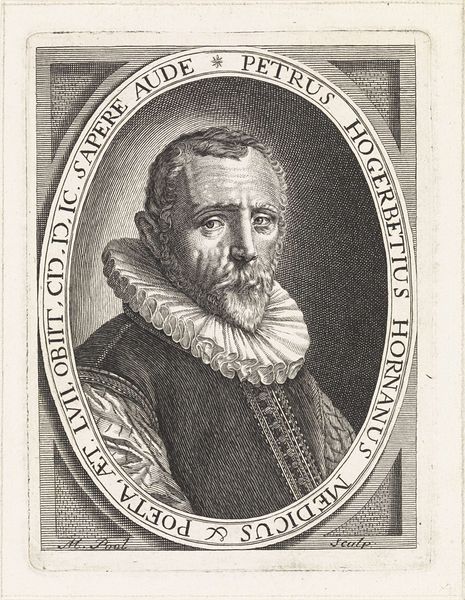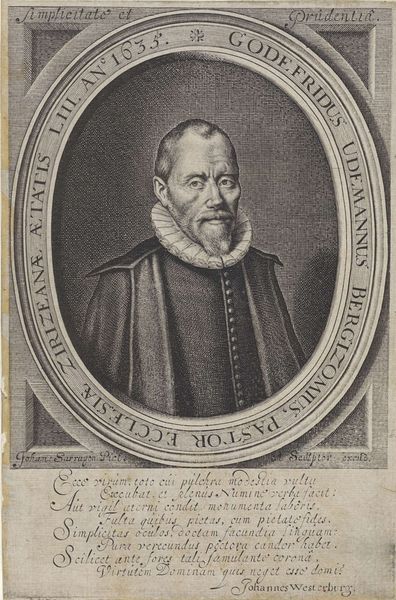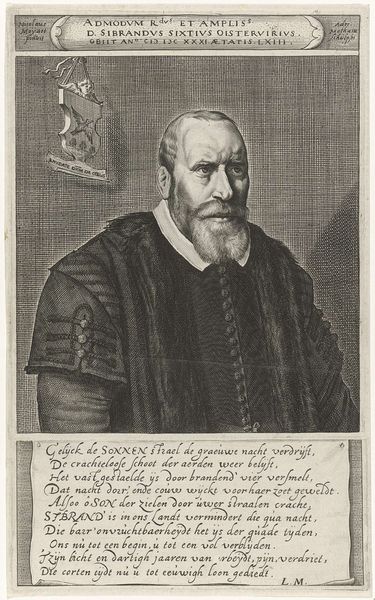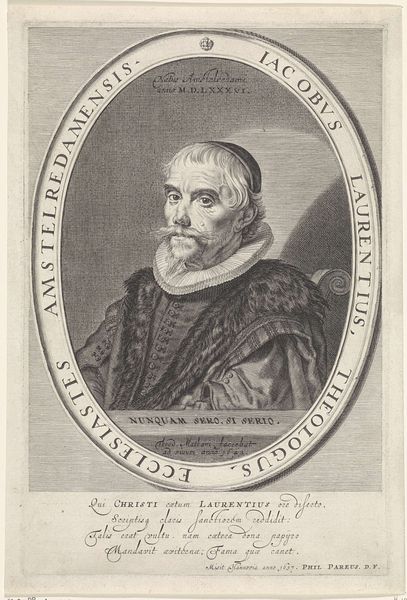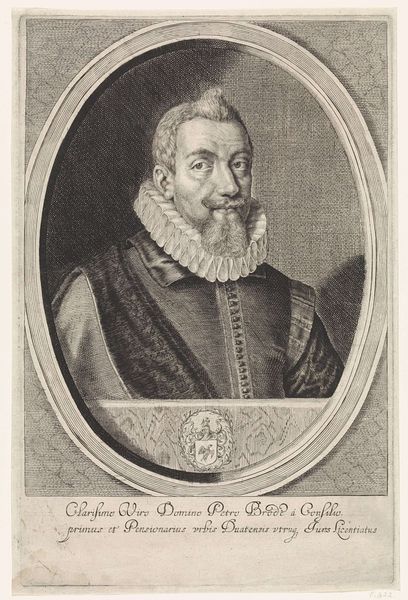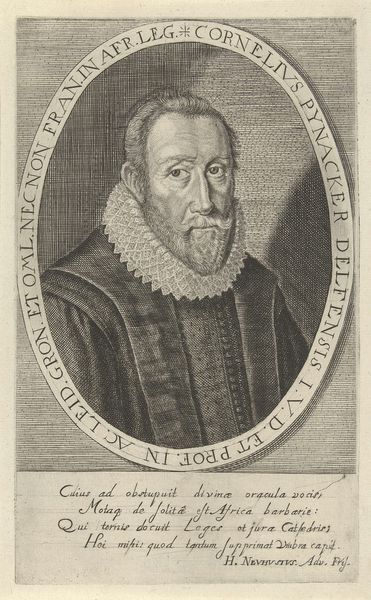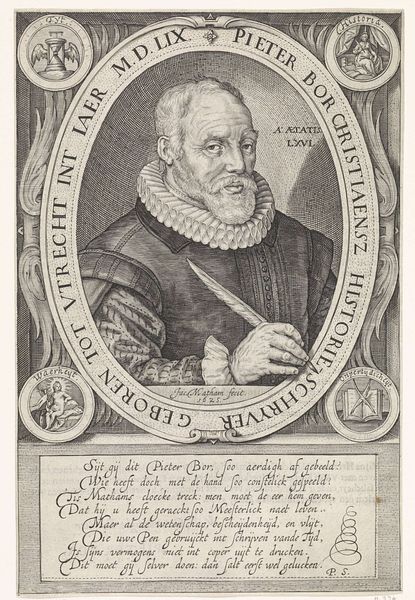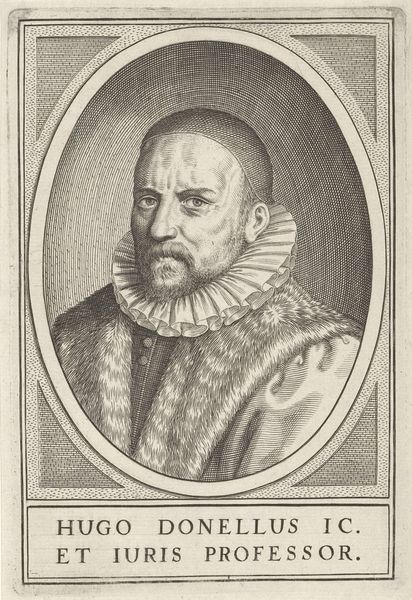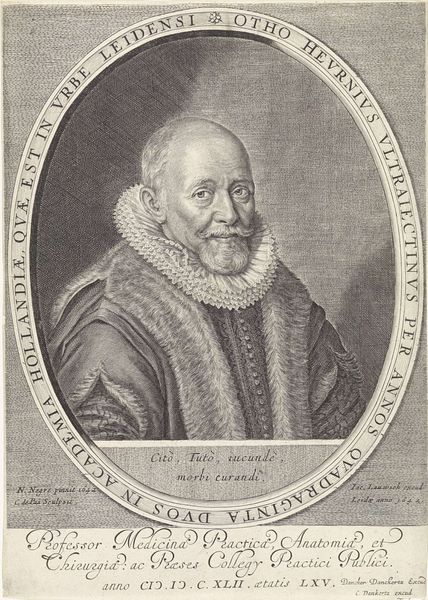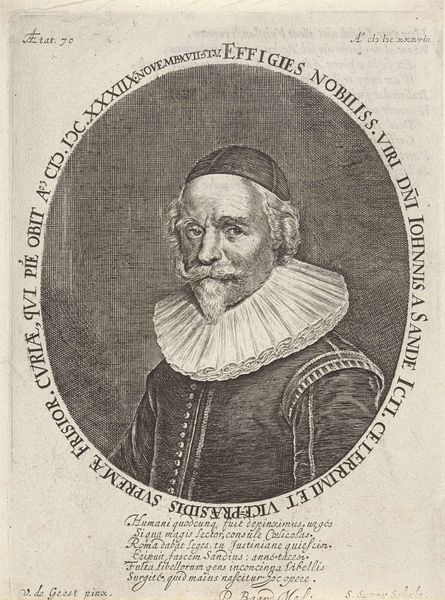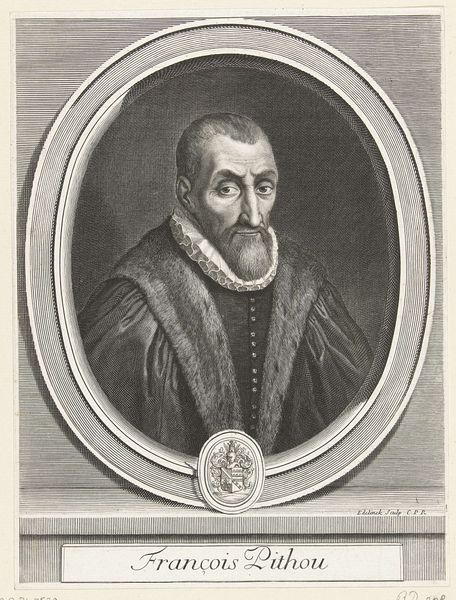
engraving
#
portrait
#
baroque
#
dutch-golden-age
#
old engraving style
#
traditional media
#
figuration
#
line
#
academic-art
#
engraving
Dimensions: height 332 mm, width 248 mm
Copyright: Rijks Museum: Open Domain
Curator: Here we have an engraving from 1648: a portrait of Ewaldus Screvelius at the age of 72, created by Hendrick Danckerts. Editor: The image feels very austere and formal; all sharp lines and contained within that strict oval. The man's expression is somewhat melancholy, adding a somber mood. Curator: Hendrick Danckerts was working firmly within a Dutch Golden Age aesthetic here. The themes of individual achievement, intellectual stature, and social positioning are certainly very prominent, don’t you think? It’s more than just an image; it’s a statement about status and cultural power. Editor: Definitely. Look at the symbols embedded around the portrait – that heraldic crest at the top, all that Latin inscription looping around him… It all seems deliberately constructed to elevate the subject, and reinforce the weight of tradition and scholarship behind him. I do wonder who Ewaldus Screvelius was, to deserve such commemoration. Curator: He was a physician and scholar in Leiden, which we can read from the text. And that symbolic frame and surrounding text are interesting; they feel almost like protective layers but also serve as identifiers that speak volumes about 17th-century societal structures. In a sense, Danckerts wasn’t simply capturing a likeness but actively contributing to Screvelius' enduring legacy. The use of line engraving lends a crisp precision, aligning visually with the scientific and intellectual pursuits of the time. Editor: Absolutely. Even the careful cross-hatching that creates the shadows, look at the subtle tones in the face for example, adds to a sense of tangible gravitas. It's clear Danckerts wanted the image to last and carry Screvelius' importance to future generations. What the artwork may be missing in colour it makes up in impact! Curator: I think this is precisely what makes it such a fascinating window into that historical moment – art wasn't divorced from societal roles, it was actively shaping and reinforcing them. Editor: Yes, portraits weren’t mere representations. Each carefully considered element becomes a key to decoding past lives, their values and achievements. Curator: Exactly. Thank you for lending me your unique perspective on this fascinating portrait. Editor: And thank you for contextualizing Screvelius and his portrait in this complex sociohistorical framework.
Comments
No comments
Be the first to comment and join the conversation on the ultimate creative platform.
